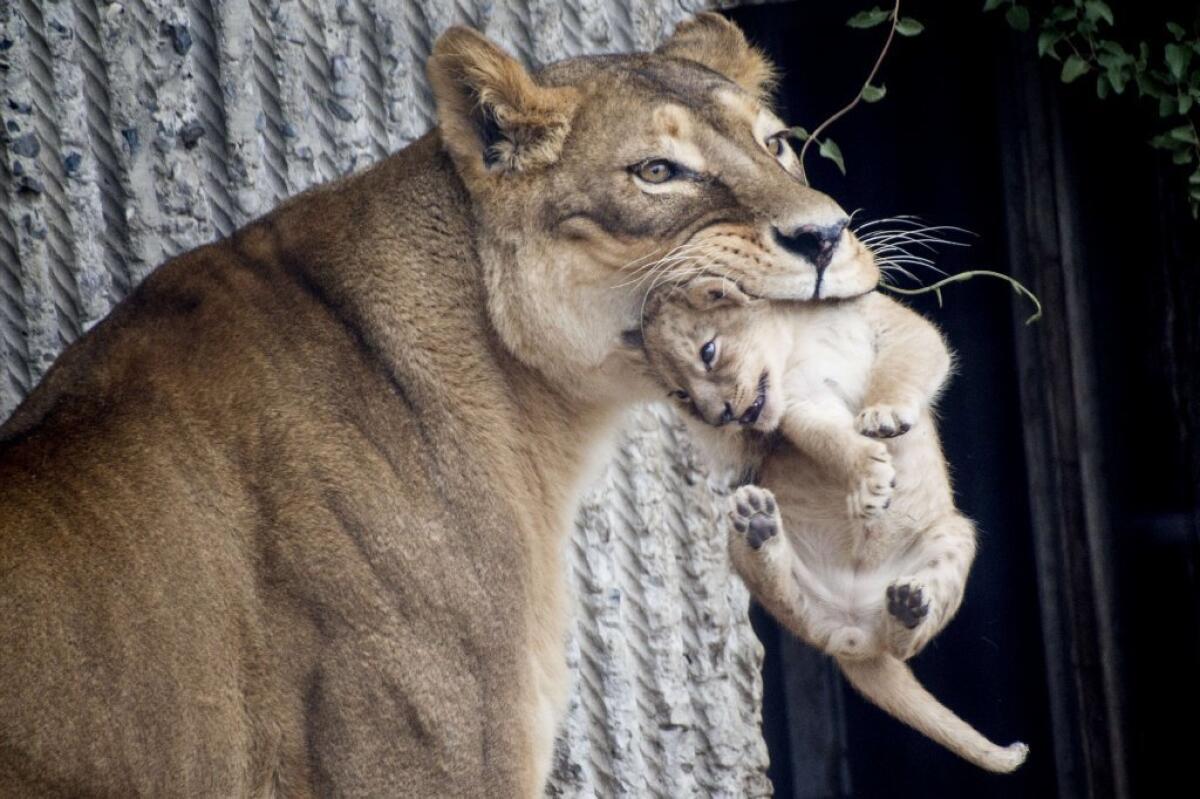Opinion: Copenhagen Zoo’s explanation for killing lions doesn’t wash

- Share via
You would think that by now we would all have a pretty good idea of what a zoo is. But the killing of four healthy lions at the Copenhagen Zoo — just weeks after it put to death a healthy young giraffe that was of little genetic value — shows that the definition can vary widely.
Does a zoo exist primarily to entertain audiences? Educate the public? Protect wild animals? Preserve the viability of species?
All of those might be correct answers, but it’s clear that in the case of the Copenhagen Zoo, and, experts say, many other European zoos, zookeepers seem to lean more toward (d): the preservation of species. That means if they want to bring in fresh blood to prevent inbreeding, they will eliminate the animals whose continued existence might get in the way of the prime directive.
With animal populations in danger in the wild, careful breeding for species preservation is as valid a mission as any — perhaps the most important mission. It’s certainly better than killing animals because visitors don’t find them interesting. The question is whether species preservation should be allowed to override all other missions when there are other options.
Europeans might scoff at Americans for our generally romantic attitude toward animals. And I could buy their conservationist-only approach if it were indeed necessary to preserve species. But it’s not.
You see, in ways, the European zoos are the more romantic ones. It’s easy enough to prevent inbreeding through contraception or by simply separating the animals, but Europeans find that idea unnatural and bothersome. They prefer to let animals copulate and reproduce, and then die at the point where they serve no further purpose.
That’s why two of the lions killed were just cubs. The other two were their parents. Which makes you wonder how much of a favor the zoo is doing animals by giving them the pleasure of giving birth — I might be prejudiced, but it’s not all that much fun for my particular species — so that it can then kill their juvenile offspring.
(The zoo said that this time it had sought out other zoos to take the animals but none were interested.)
There is no doubt that people, having decimated the populations of so many species, have a responsibility to sustain as many healthy populations as possible. But there also is the very basic responsibility that should be tacitly accepted when taking on a wild animal’s life, and that’s true whether the animal was captured in the wild or is the offspring of those taken from their natural habitat. We have deprived those animals of a natural life — letting them have babies doesn’t quite make up for the inability to roam for miles — which means we have removed their natural ability to protect themselves from harm.
This, in turn, implies that we have taken on the responsibility of protecting them. That might not always be possible. But this Danish zoo’s philosophy — that it’s perfectly kind to kill animals as long as you let the worthy ones reproduce, creating more animals to kill before their time — seems like more than differing cultural viewpoints. It seems manipulative, harsh and irresponsible.
ALSO:
Should California make Sea World’s killer whale shows illegal?
The coat hanger, symbol of dangerous, pre-Roe abortions, is back
Malaysia Air Flight 370: The spooky questions we still can’t answer
More to Read
A cure for the common opinion
Get thought-provoking perspectives with our weekly newsletter.
You may occasionally receive promotional content from the Los Angeles Times.







